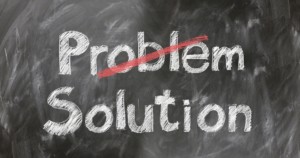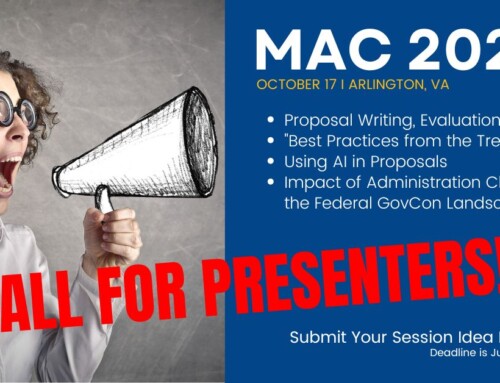Originally posted on Lohfeld Consulting’s blog – Resumes for the Win.
Resumes are the least appreciated proposal section. Proposal Managers often delegate resume writing to inexperienced writers. Writers create resumes without understanding how to interview the proposed key or non-key personnel for winning content and without understanding the proposed solution. Proposal reviewers frequently spend little time on resume review. Yet, resumes may provide discriminating Strengths that result in the win.
Exceeding Requirements
In a best value trade-off bid, Federal Government evaluators use a scoresheet based on the evaluation factors to check the proposal for compliance and identify Strengths, Weaknesses, Deficiencies and Risks to justify a final score or rating. To rise to the level of a Strength, the feature (in this case, person) must offer proven benefits or results that exceed requirements and/or significantly reduce risk in a manner the customer values.
Proposals frequently state that a person or group of proposed personnel meet or exceed requirements in terms of years of experience, certifications, education, and the like. Each of these claims requires proof of customer benefits. Stating “our management team brings 50+ years of experience, exceeding requirements” is meaningless. How do years of experience benefit this customer? What requirements are exceeded? These types of statements lack clarity and are not scorable.
I recently reviewed a proposal draft that claimed a proposed SME exceeded requirements. When I examined the resume, I found no specific examples of how the SME met much less exceeded requirements such as “the Lead Engineer must demonstrate ten years of experience in expert consultation and technical leadership.” The proposal writer insisted that the evaluator would conclude or infer that experience existed. However, absent specific evidence, I marked the resume as Deficient. For the next proposal review, the writer added in the key words “exceeds requirements with 15 years of expert consultation and technical leadership” without evidence. Lack of substantiation resulted in a score of Weakness.
For the next round of color team reviews, the resume writer interviewed the Lead Engineer, obtained specific examples of the required experience, and gathered quantitative examples of how this expertise and leadership saved the customer both time and money. Now the resume garnered a Strength!
Proposal resumes may offer more years of experience, more degrees, more certifications that on paper exceed requirements. However, exceeding requirements is of no value unless the narrative also explains why and how these qualifications benefit the customer’s program and/or mission objectives with relevant and preferably quantified results. Only then can the Government evaluator score the resume offered as a Strength.
Proven Results
The best way to write a resume rich in Strengths is to create an interview guide based on the labor category and/or position requirements and the key solution elements. First, interview the proposed candidate asking for specific examples of 1) how they meet or exceed each requirement, and 2) how this experience, certification, skill, or education benefits this customer’s mission or program objectives. Can they quantify any of these benefits for more compelling proof?
Next, describe the proposed solution to the interviewee. Ask them detailed questions:
- Have they implemented this solution successfully?
- Exactly what did they do?
- What benefits resulted?
- What were the lessons learned?
- Can they quantify the benefits in terms of efficiencies gained, performance standards exceeded, customer satisfaction, schedule or cost savings, or other positive outcomes?
- Did the customer respond positively with a written kudos or CPARS rating?
If the proposed individual has successful experience with the proposed solution, that is a winning resume!
Resume Success Stories
The best resumes generate success stories that resonate not only as personnel qualifications but also as proof of the efficacy and relevancy of the proposed solution. Resume writers should alert technical and management approach writers to these stories. However, they can only do so if the Capture and Proposal Manager brief the writers on the key elements of the solution Strengths. Then, writers can create persuasive resume stories that belong in the proposal narrative, not just the resumes.
Stories create sticky memories; they grab and hold the evaluators’ attention. Use resume success stories to provide evidence of Strengths. Lessons learned, results achieved, relatable anecdotes, problems solved: all of these narratives gain attention and persuade evaluators that the solution works. The more stories of proposed personnel successfully implementing the proposed solution, the better. Great resumes further discriminate your proposed Strengths.
Resumes are a Key Element of Your Value Proposition

When bidders hold solutioning sessions, they correctly focus on the technical and management approach. However, resumes are an integral part of the value proposition. Which personnel best meet and/or exceed requirements as well as offer specific experience with results that demonstrate positive outcomes of the solution? Are there
any gaps in employee resumes that require recruiting new personnel with experience in the proposed solution? The bid personnel provide further substantiation of the solution and are an important consideration during solutioning.
Do not underestimate the importance of resumes. Resumes can earn your proposal scorable Strengths as well as provide further substantiation of positive technical and management results. Train resume writers to create more than a CV. Teach resume writers to create resumes that win.




Leave A Comment